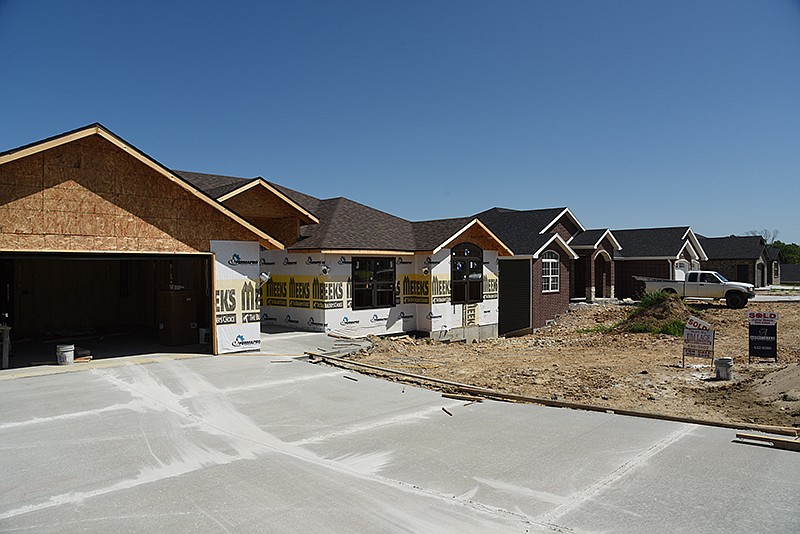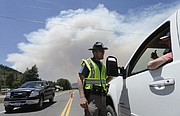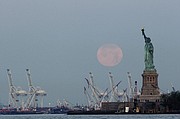At a glance
remodels and traditional spec homes, although remodels are maintaining a steady pace.While the term "cautious optimism" has been tagged to the construction industry too many times to count in the years since 2008, the sentiment still applies to building contractors in Mid-Missouri as residential and commercial construction continue to bounce back.
Missouri commercial contractors reported higher short-term optimism for the construction industry's economic outlook on the Associated General Contractors of Missouri's first-quarter 2016 Contractor Confidence Index survey, released in April. While the index for outlook over the next six months rose from the fourth quarter of 2015, it remained lower than it was a year before.
"We are happy that all trends are positive, but, unlike 28 other states that showed employment growth between February and March 2016, Missouri shed 2,000 construction jobs during the same period," said Len Toenjes, AGC Missouri president, in the April news release. "While other parts of the country have seen a full recovery in the building industry, Missouri has been lagging in its recovery, but it is still a recovery. We have grown employment by 4 percent, or 4,500 jobs, since March 2015."
Gains in optimism reported on the first-quarter 2016 survey were more tempered for the longer-term outlooks of the next 12 and 18-24 months.
"The reason, I think, for the long-term uncertainty has to do a lot with workforce availability. There's real concerns about the ability to find workers, find young people who are interested in construction careers," Toenjes said. "It's a good thing to have a lot of work, and it's a bad thing to not be able to find workers to do it."
AGC Missouri began tracking the number of construction work hours performed in the state around 2008.
"Back in '08 the work hours being performed were somewhere near 16-17 million work hours annually. That was sort of a peak. In two years' time that dropped down to 8.5 million. So we had a significant dip. Now, our most recent month, we're back up over 11 million. It's had a good bounce-back," Toenjes said. "It's good to see sort of a general rebound after seven or eight tough years. I think for the first time in several years it's across the board - it's not localized in any one segment of the industry or in any one market."
In the Mid-Missouri market, some corners of the construction business are booming.
"Everybody that I know is busy. There's plenty of work for good contractors out there," said James Stark, owner of Stark Construction Services in Jefferson City and a board member for the Home Builders Association of Central Missouri.
All of that pent-up demand is really coming to fruition."
Commercial
Commercial construction has continued its steady increase over the last few years. But that growth locally is largely isolated to additions and remodels, without many new commercial buildings.
"I think there was really such a pent-up demand. There's a lot of deferred maintenance, a lot of deferred building that was going on. People were just postponing projects," Toenjes said. "Now all of that pent-up demand is really coming to fruition."
Jefferson City issued two permits for non-residential new buildings in 2015 - its lowest number since 1988, the first year of data available. But the city issued it highest number ever of non-residential expansion/remodel permits - 154.
"Business owners are upgrading. They're upgrading equipment; they're upgrading technology; maybe they're combining services under one building," Stark said. "A lot of them will look at, 'If I can do this and add on, it's cheaper than doing a new building.'"
Those upgrades could be on both sides of the construction equation.
"Not only was there pent-up demand from the owners' side, but also from the contractors' side - that a lot of them are now with a lot better backlog in workflow, better to make some investments in equipment and technology that are helping them generate a little more productivity," Toenjes said.
So far this year new commercial construction in Jefferson City is trending up - already the city has issued nine permits for new commercial builds. A few notable projects include the planned Edge Express Phillips 66 station and convenience store at West Edgewood Drive and Missouri 179; Big O Tires' new location in progress at 1614 Jefferson St.; the IHOP restaurant under construction on Missouri Boulevard; and the new strip mall building behind Panera Bread's new location on Missouri Boulevard, which already has confirmed Smoothie King as a future tenant.
Most commercial construction is happening inside city limits, with only four commercial permits issued in Cole County last year.
"There's not the infrastructure out in the county yet," Stark said. "There is in Apache Flats area; there's some stuff out there. It depends on what kind of business you've got."
Two of the in-city projects are public rather than private business - the new hangar at Jefferson City Memorial Airport and the Lincoln University/Parks and Recreation Wellness and Multipurpose Recreation Center on Lafayette Street.
"I think it'll pick up," Stark said. "I think there needs to be a reason for people to come to Jeff City to build. We've got all kinds of restaurants and things like that, but there's not a lot of businesses that create jobs coming to town."
Back then people were wanting to stay where they were and fix it up, but now I've seen a choice where you stay where you are and fix it up or you build new - and people are building new."
Residential
When the News Tribune asked local contractors about the state of their industry two years ago, one trend they noted was the rise of remodels and residential alterations over new builds.
Now, Stark said, low interest rates paired with new confidence among homeowners has flipped that trend somewhat.
"It's still steady. It's not booming like it was," Stark said of the remodel wave. "Back then people were wanting to stay where they were and fix it up, but now I've seen a choice where you stay where you are and fix it up or you build new - and people are building new."
Jefferson City issued 39 new single-family residential building permits in 2015, along with 193 permits for residential alterations and additions. That's down from the 55 new residential building permits issued in 2014, but 2011-14 showed a positive pattern over sub-50-permit years from 2008-10.
New construction and remodels have a generally inverse relationship in Jefferson City. As new residential construction dipped slightly in 2015, permits for residential additions and alterations climbed to 193 from 187 the year before - steady, but lower than a recent peak of 212 in 2012.
"It's definitely better than two years ago," said Jim Lage, who owns Henley-based James Lage Construction. "I've turned down a lot of customs lately because we don't have time to go to them. We've turned down seven or eight of them here in the last couple of weeks."
Lage said he has turned down several requests to build individual custom homes because the roughly 50 lots between his two ongoing subdivision projects started a year a half ago - Lisa's Subdivision in Wardsville and Trenton Court off Route C in Jefferson City - sold so quickly.
"As fast as we're digging them out, we're selling them," he said.
While new residential developments are a draw, some contractors are observing what appears to be the death of the traditional spec home.
"A builder would go in and buy a piece of property, build homes on it and sell it. They'd have a sample home, and people would come in and buy a house that's already built (or one like it)," Stark said. "It's been like that since I've been in the business, up until about 2008."
He attributes the shift away from spec homes primarily to buyers' growing desire to build homes the way they want them.
"The last couple years have been a lot of custom homes," Stark said. "The ones that I have done have been people building, for lack of a better term, their 'death house' - the house they're going to die in, the house they've always wanted. They want to go ahead and build it now while interest rates are low. We've built a lot of nice houses."
Lage considers the homes in his subdivisions to be about 50 percent spec and 50 percent custom.
"People always ask, are they specs or custom? And I tell them I don't know how you'd define it," Lage said. The contractor offers buyers a selection of floor plans, but "we're doing what they want according to their house plan."
Stark also thinks changes in the banking industry since the 2008 economic downturn contributed to the industry change.
"Banks had the financing on the spec homes; contractors would have to pay the interest on the money. It was a bad deal because they weren't selling them," Stark said. While many contractors are choosing not to put out so much money upfront, banks are also hesitant to lend in those large quantities. "The lending regulations are pretty tight now, too."
A good portion of those new custom homes are going up outside of city limits.
"A lot of guys I know are building out in the county or in the California area," Stark said. "If the building permits in the city are going down, I bet you the building permits in the county are going up."
He's right.
Cole County saw construction begin on 91 new single-family homes in 2015, more than twice Jefferson City's 39. The story was similar in 2014 - 83 permits issued for new homes in Cole County to 55 in Jefferson City.
One factor in building outside city limits is a simple cost-saving measure. Jefferson City has adopted the 2015 International Building Code, which requires more from builders and buyers than the 2000 code the county is still using.
"Definitely the building code requirements are more stringent in the city than they are in the county, and some people go out into the county for that reason to build," Stark said.
An even simpler factor is space.
"There's just no lots in town. I put these streets in, and it just takes so much to put these streets in and get them all through," Lage said.
Lage's 23-lot Lisa's Subdivision is in Wardsville, but Trenton Court's 24 lots are in Jefferson City limits. And he'll begin selling the 84 lots of his next Jefferson City residential development, the planned Turtle Creek subdivision off South Country Club Drive, any time now.
Read more from the July edition of #jcmo Inside Business here.





